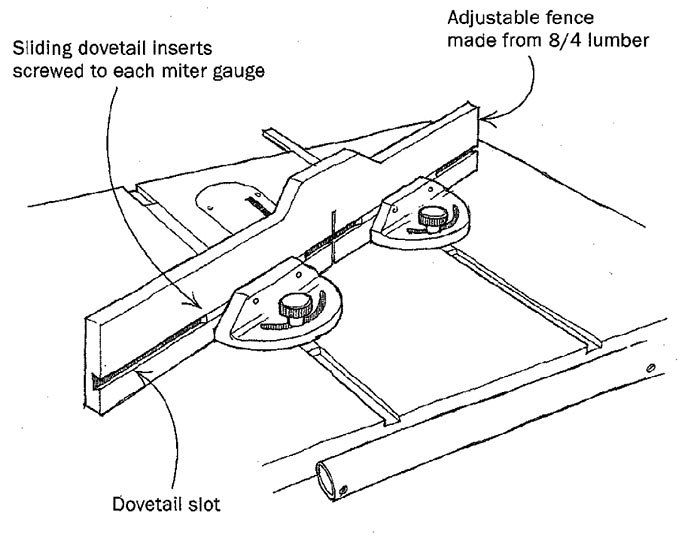Double Miter-Gauge Jig for Cutting Angles

Frustrated by the inaccuracies and trial-and-error test cuts that seem to go with using a regular miter gauge on the tablesaw, I had set the gauge aside and relied on dozens of auxiliary fences preset to specific angles. But now, after years of not using that one miter gauge, I discovered all I really needed was two miter gauges connected by a hefty fence.
To make the jig, I set one miter gauge in each slot and screwed a 2-in.-thick oak fence, 2 in. wider than the maximum height of the blade, to both of the gauges. To allow the fence to move slightly when the angle is changed, I cut a dovetailed slot, centered where the screw holes for the miter gauge go into the fence. Then I made some mating dovetail pieces, slid them in the dovetail slot and added screws through the miter gauges into the mating pieces.
With the jig, I can measure the cut angle directly between the fence and the blade and hold angles more accurately. When I need to cut a complementary angle, I simply slide the workpiece along the fence and make a cut on the other side of the blade.
Joseph M. Santapau, Yardley, Pa.
Fine Woodworking Magazine, April 1998 No. 129

Fine Woodworking Recommended Products

Double Sided Tape

Jorgensen 6 inch Bar Clamp Set, 4 Pack

Veritas Micro-Adjust Wheel Marking Gauge




















Log in or create an account to post a comment.
Sign up Log in